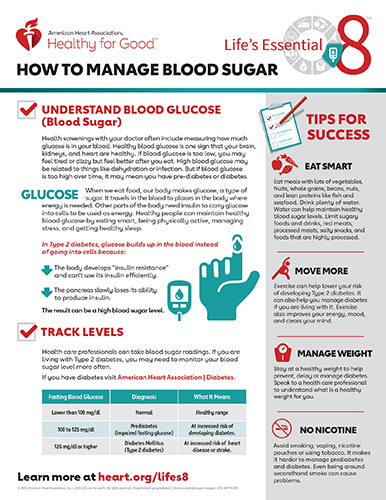Medically Reviewed by: Scientific Advisory Board
For most people with diabetes, monitoring their blood glucose (sugar) levels is a normal part of their life. Yet, it is a crucial aspect of proper diabetes management. It involves regularly measuring and tracking the glucose level in your blood to ensure that it stays within a healthy range.
Knowing how to monitor your levels successfully helps you stay in tune with your body and make the right decisions for your health.
What is a healthy blood sugar range?
Blood glucose targets may vary depending on age, duration of diabetes, and other health factors.
However, a generalrecommendation is to keep your glucose levels between 80 to 130 mg/dL before a meal and lower than 180 mg/dL for the two hours following a meal.
How often should I check my blood sugar?
How often you check your blood sugar depends on the type of diabetes, your treatment plan, and whether you are taking medications.
Generally speaking, it’s good to check your blood sugar levels when you first wake up, before consuming a meal, two hours after a meal, and before going to bed. You may also want to monitor your levels before and after exercising, as physical activity can significantly lower blood glucose levels.
How can I monitor my blood sugar levels?
There are two main ways to keep track of your blood sugar levels:
- Self-monitoring blood glucose (SMBG) involves using a glucose meter to measure the amount of glucose in a drop of blood taken from a finger prick. This measures your levels at that given moment.
- Continuous glucose monitoring (CGM) can be done through devices with tiny sensors placed under the skin to measure blood glucose levels every few minutes.
Why is monitoring so important?
Monitoring your blood glucose levels is crucial for managing your diabetes and preventing health complications, as it helps you identify patterns, keep records, and understand the impact of food, exercise, and medication on your blood sugar levels. This allows you to take better control of your health.
Getting a quick reading of your blood to know when your levels have risen or fallen can help you take proactive measures to prevent emergencies.
Here are four tips to successfully monitor blood sugar levels:
- Find the monitoring device that works best for you: Make sure to use a glucose meter that is accurate, easy to use, and gives quick results. It is also essential to find a device you can easily carry to ensure you always have the supplies for checking your blood, no matter where you are. Lastly, choose a meter with a control solution so you can regularly test the accuracy of your glucose meter and strips.
- Establish a routine: Having a schedule for when and how often to check your blood is essential to ensure your levels remain within a healthy range throughout the day. Incorporating your monitoring as a part of your daily routine will make it easier and less likely that you forget. Checking your blood glucose at different times is a good strategy as your levels change before and after meals, when physically active, and before bedtime.
- Keep a log: A log of your blood glucose readings can help you better understand patterns and things that affect your blood sugar. It can also benefit your doctor to identify patterns and adjust your treatment plan as needed. You can use apps on your phone or keep a written journal, whatever works best for you.
- Know the signs and symptoms: Understanding the signs of low blood glucose (hypoglycemia) and high blood glucose (hyperglycemia) can help you take prompt action to correct any imbalances and prevent complications.

- Symptoms of hypoglycemia include dizziness or lightheadedness, shaking, sweating, weakness or fatigue, blurred vision, rapid heartbeat, and confusion.
- Symptoms of hyperglycemia include frequent urination, excessive thirst, dry mouth, tingling or numbness in the hands and feet, nausea, and blurred vision.
Keeping your blood sugar levels within range will help you stay in control and reduce the risk of complications. By incorporating these tips into your routine, you are taking a positive step towards better managing your diabetes.
With proper monitoring and effective management, you can take the reins on your diabetes and elevate your overall health, leading to a brighter and more fulfilling life!
References, Studies and Sources:
Mayo Clinic - Diabetes Management
Always consult your physician before beginning any program. This general information is not intended to diagnose any medical condition or to replace your healthcare professional. If you experience any pain or difficulty, stop and consult your healthcare provider.




